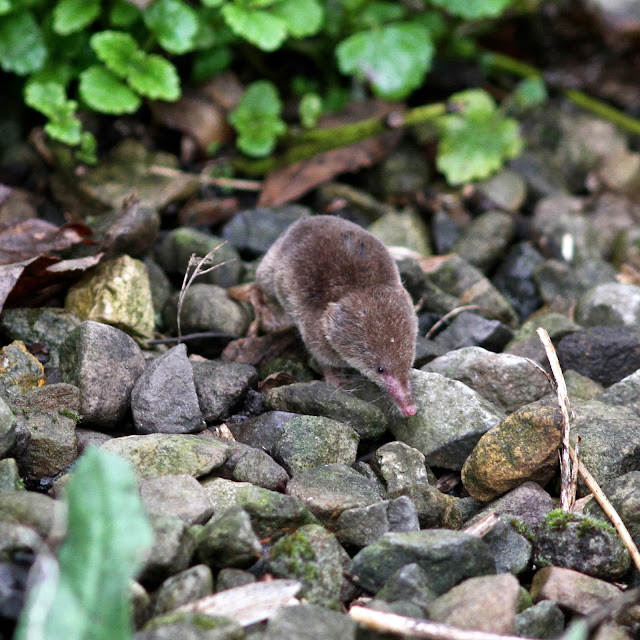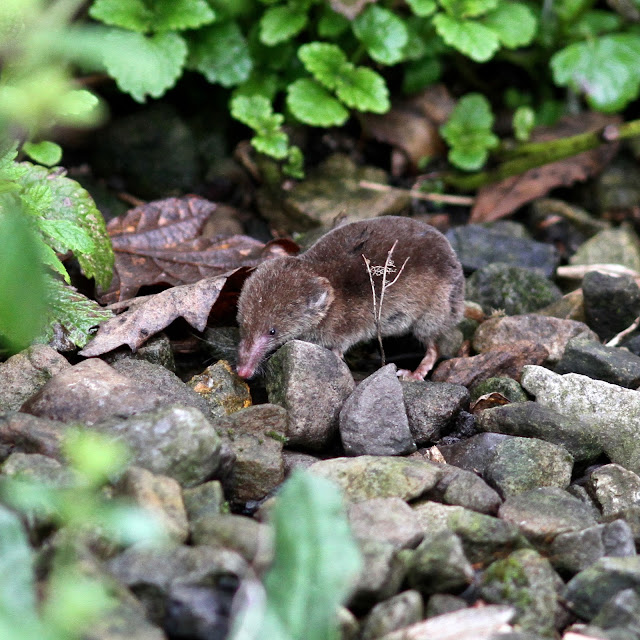At this time of year the turnover in each beehive is around 1000 bees per day, i.e. 1000 bees die and another 1000 emerge to join the workforce. I have seven hives in the garden so that's a lot of dead bees each day. Many are old foragers who die away from the hive but some also die inside. They are dealt with by undertaker bees - part of the large force of house bees. Some of the dead bees are carried away but many are just thrown out of the entrance and end up on the ground in front of the hives. Dead bees are a source of protein and are recycled by a variety of scavengers and predators. I often see great tits outside the hives, mostly collecting dead bees but probably a few live ones as well. I haven't seen this creature there before. It is a common shrew and was repeatedly dashing out from cover to search amongst the gravel on the path below the hives.
Shrews have to eat more than twice their body weight every day and are almost constantly active, although they are not often seen in the daytime. This one is doing a good job in recycling the dead bees.





I've heard the shrews can be a problem for hives during the winter so make sure to have your mouse guard on then! Very cute, love the long pink nose.
ReplyDelete